Appropriate and relevant internationally, Lower Secondary has been designed to be culturally sensitive. It includes top-quality teaching and assessment resources appropriate for teaching and learning in local and international schools. CLSP
- Provides excellent preparation for IGCSE and any other challenging curriculum
- Builds on the primary stage,
- Develops children’s knowledge and skills of the three key subject areas, Mathematics, English and Science.
This Curriculum Framework identifies a set of learning objectives for English, Mathematics and Science for each year of lower secondary education and focuses on what students should be able to do at the end of each stage.

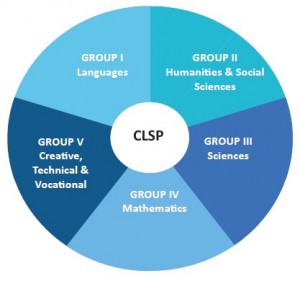
The two types of assessments within the CLSP stage are
- TIPS semester exams and
- Cambridge Checkpoint
A two and half year Lower Secondary programme culminates in grade 8 students appearing for the Cambridge Checkpoint tests in English, Mathematics and Science, which are externally set and marked by Cambridge.
The offered holistic curriculum for lower secondary followed by TIPS is unique as it is designed for smooth transition towards IGCSE and is based on the prior learning in primary years.
Subjects Offered:
- English
- Hindi/French
- Mathematics
- Physics
- Chemistry
- Biology
- History
- Geography
- Information & Communication Technology
[vc_row][vc_column][vc_tta_tour][vc_tta_section i_icon_fontawesome=”fas fa-language” add_icon=”true” title=”Languages” tab_id=”1639664949973-1362bc16-b3b5″][vc_column_text]
English
Cambridge Secondary 1 English enables learners to communicate confidently and effectively and to develop the skills to respond to a range of information, media and texts with understanding and enjoyment. Learners who follow this framework will develop a first language competency in English based on a curriculum designed to be successful in any culture and to promote cross-cultural understanding.
For Cambridge Secondary 1 English, the curriculum promotes an enquiry-based approach to learning to develop thinking skills and encourage intellectual engagement. The curriculum is presented in five content areas or ‘strands’. These are further divided into ‘substrands’. The five strands and substrands are:
- Phonics, spelling and vocabulary
- Grammar and punctuation
- Reading
- Writing
- Reading
- Fiction and poetry
- Non-fiction
- Writing
- Fiction and poetry
- Non-fiction
- Speaking and listening
Hindi/ French/ Malayalam
Learners who follow this framework will develop a second language competency based on a curriculum designed to be successful in local culture and to promote cross-cultural understanding and respect towards people. Students during this program
- Develop skills for spoken and written language
- Are able to use the language effectively
- Learn to respond to range of information from all around,
- Understand media and text available with basic understanding and joy
The curriculum is presented in five content areas or ‘strands’:
- Phonics, spelling and vocabulary
- Grammar and punctuation
- Reading
- Writing
- Reading
- Fiction and poetry
- Non-fiction
- Writing
- Fiction and poetry
- Non-fiction
- Speaking and listening

[/vc_column_text][/vc_tta_section][vc_tta_section i_icon_fontawesome=”fas fa-user” add_icon=”true” title=”Human and Social Sciences” tab_id=”1639664949992-6e7868c4-8465″][vc_column_text]The study of history, geography, economics, government and civics is the study of humanity, of people and events that have individually and collectively shaped our nation and the world.
A strong and effective social studies program helps students make sense of the world in which they live, allows them to make connections between major ideas and their own lives, and it helps them see themselves as active members of a global community.
Knowledge of content is very important, while it is equally important to engage our students in historical thinking. Students are engaged and challenged to think like historians, raise questions, think critically, consider many perspectives and gather evidence in support of their interpretations as they draw upon chronological thinking, historical comprehension, historical analysis and interpretation, historical research, and decision-making.
TIPS follows the six major social studies practices :
- Gathering, using and interpreting evidence
- Chronological reasoning and causation
- Comparison and contextualization
- Applying geographic reasoning
- Understanding Economics and economic systems, and
- Engaging in civic participation
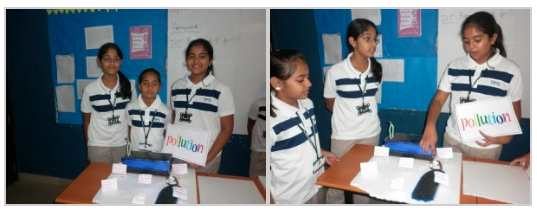 [/vc_column_text][/vc_tta_section][vc_tta_section i_icon_fontawesome=”fas fa-flask” add_icon=”true” title=”Science” tab_id=”1639666640173-6db8254e-0fa9″][vc_column_text]This curriculum framework covers four content areas: scientific enquiry, biology, chemistry and physics. Scientific enquiry is about considering ideas, evaluating evidence, planning investigative work, and recording and analysing data. The scientific enquiry objectives underpin biology, chemistry and physics, which are focused on developing confidence and interest in scientific knowledge. Environmental awareness and some history of science are also part of the curriculum.
[/vc_column_text][/vc_tta_section][vc_tta_section i_icon_fontawesome=”fas fa-flask” add_icon=”true” title=”Science” tab_id=”1639666640173-6db8254e-0fa9″][vc_column_text]This curriculum framework covers four content areas: scientific enquiry, biology, chemistry and physics. Scientific enquiry is about considering ideas, evaluating evidence, planning investigative work, and recording and analysing data. The scientific enquiry objectives underpin biology, chemistry and physics, which are focused on developing confidence and interest in scientific knowledge. Environmental awareness and some history of science are also part of the curriculum.
Cambridge CLSP Science, the curriculum strands:
Scientific enquiry
- Ideas and evidence
- Plan investigative work
- Obtain and present evidence
- Consider evidence and approach
Biology
- Plants
- Humans as organisms
- Cells and organisms
- Living things in their environment
- Variation and classification
Chemistry
- States of matter
- Material properties
- Material changes
- The Earth
Physics
- Forces and motion
- Energy
- The Earth and beyond
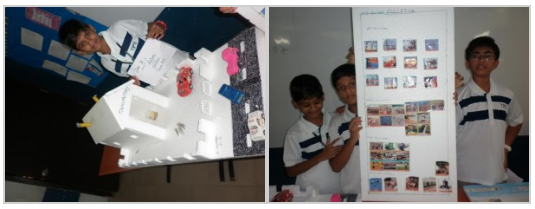 [/vc_column_text][/vc_tta_section][vc_tta_section i_icon_fontawesome=”fas fa-plus” add_icon=”true” title=”Mathematics” tab_id=”1639666741896-bc6dcd38-a288″][vc_column_text]The curriculum framework explores six content areas: number, algebra, geometry, measure, handling data and problem solving. The first five content areas are all underpinned by problem solving, which provides a structure for the application of mathematical skills. Mental strategies are also an important part of the number content. The curriculum focuses on principles, patterns, systems, functions and relationships, so that learners apply their mathematical knowledge and develop a holistic understanding of the subject.
[/vc_column_text][/vc_tta_section][vc_tta_section i_icon_fontawesome=”fas fa-plus” add_icon=”true” title=”Mathematics” tab_id=”1639666741896-bc6dcd38-a288″][vc_column_text]The curriculum framework explores six content areas: number, algebra, geometry, measure, handling data and problem solving. The first five content areas are all underpinned by problem solving, which provides a structure for the application of mathematical skills. Mental strategies are also an important part of the number content. The curriculum focuses on principles, patterns, systems, functions and relationships, so that learners apply their mathematical knowledge and develop a holistic understanding of the subject.
Cambridge Secondary 1 Mathematics, curriculum strands:
Number
- Integers, powers and roots
- Place value, ordering and rounding
- Fractions, decimals, percentages, ratio and proportion
- Calculation
Algebra
- Expressions, equations and formulae
- Sequences, functions and graphs
Geometry
- Shapes and geometric reasoning
- Position and movement
Measure
- Length, mass and capacity
- Times and rates of change
- Area, perimeter and volume
Handling data
- Planning and collecting data
- Processing and presenting data
- Interpreting and discussing results
- Probability
Problem solving
- Using techniques and skills in solving mathematical problems
- Using understanding and strategies in solving problems
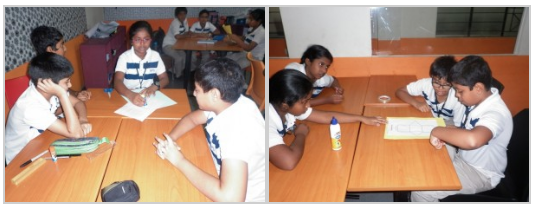 [/vc_column_text][/vc_tta_section][vc_tta_section i_icon_fontawesome=”fas fa-photo-video” add_icon=”true” title=”Creative Technical and vocational” tab_id=”1639666829229-156f3cf2-21cc”][vc_column_text]
[/vc_column_text][/vc_tta_section][vc_tta_section i_icon_fontawesome=”fas fa-photo-video” add_icon=”true” title=”Creative Technical and vocational” tab_id=”1639666829229-156f3cf2-21cc”][vc_column_text]
ICT
ICT Starters gives schools a flexible framework to develop learners’ ICT competence. Modules are delivered according to the needs of each learning situation and age of the learners – across the curriculum or as a separate course of study.
Learners develop key ICT skills in a range of applications including word processing, computer graphics, databases, spreadsheets, email, internet, presentations, video/animation and web authoring.
Technology projects methodically integrate technology into curriculum effectively to create meaningful learning opportunities for students. Each technology project contains theme-related assignments that use Microsoft and Adobe applications. It helps the students to:
- Write a report, article, or letter using Word
- Produce an presentation, ad, or story with PowerPoint
- Record, calculate, graph, and analyze data with Excel
- Store and manipulate data on a topic using Access
- Create a digital scrapbook using Photoshop
They also consider wider issues such as internet safety and adapting their work to the audience.
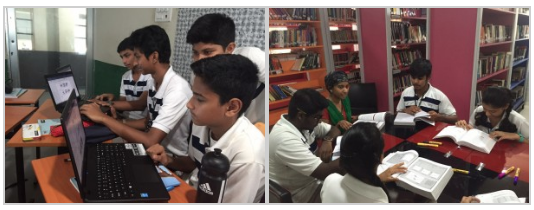
[/vc_column_text][/vc_tta_section][vc_tta_section i_icon_fontawesome=”fas fa-palette” add_icon=”true” title=”Arts” tab_id=”1639666919104-7bc9f88e-66c8″][vc_column_text]
The students at TIPS are encouraged to participate in the various art forms offered at our school. The arts @TIPS engages the students and encourages them to express if dance or drama forms to stimulate their imagination and critical thinking abilities. The students are provided with variety of options to pursue their passion and follow their dream.
Dance
Dancing is the act of moving the body in rhythm, usually in time to music. It seems natural for people to express themselves through rhythmic movement. Dancing is both an art form and a form of recreation. Dance as an art form may tell a story, set a mood, or express an emotion.
Music
Music includes the study and exploration of sound and the expressive use of musical elements. Students will join together in musical activities using their voices, bodies and simple instruments to develop concepts about sound and musical awareness.
Students will be exposed to and work on, a wide range of musical stimuli. They will participate both individually and in groups. Students will read, develop and record musical ideas in composition.
Drama
Drama includes the development of creative skills, verbal and non-verbal expression, an awareness of the perspectives of others, and aesthetic appreciation. Drama enables all students to communicate in powerful ways that go beyond their spoken language ability.
[/vc_column_text][/vc_tta_section][vc_tta_section i_icon_fontawesome=”fas fa-basketball-ball” add_icon=”true” title=”Physical Education / Sports” tab_id=”1639666961643-0dd70e2a-ef7d”][vc_column_text]
Students will be exposed to a number of activities that will develop motor skills, which may later be applied in various physical activities within and beyond the school setting. They will become aware of a number of positive leisure-time pursuits.
In P.E, students are exposed to a wide range of physical and health-related activities and experiences so that they can make informed choices throughout their lives.
Students are encouraged to participate in an active lifestyle and recognize the ways in which exercise affects their body and their overall fitness or well-being, developing an understanding of the role of physical activity in a healthy lifestyle.
Students also come to recognize that P.E takes place within a cultural context that should be appreciated. P.E offers students the opportunity to set themselves physical objectives, gaining pleasure or satisfaction from accomplishing these physical tasks or challenges and reflecting on their performance.
Along with the structured curriculum for PE, students get opportunities to participate in various individual and team games to test their metal in the field.
We also organize annual interschool Swimming Tournament, Soccer Challenge, Badminton fest and martial arts competitions amongst various activities.

[/vc_column_text][/vc_tta_section][vc_tta_section i_icon_fontawesome=”fas fa-key” add_icon=”true” title=”Real Life Exposure” tab_id=”1639667030487-a9a55766-1823″][vc_column_text]
To provide students with the real life exposure, we engage them in various relevant and challenging activities which not only engage them but sharpen their understanding of the world. Following are some of the activities mentioned.
Robotics
One of the fundamental goals of the Robotics Program is to inspire and excite future generations of researchers, engineers, and scientists. One is never too young to start learning about robotics and robot programming. Robotics at TIPS has developed in several programs specifically for children from Grade 3 through high school.
But there is much more to robotics education than just teaching about robots. Students at all grade levels are fascinated with robots, and educators have found that teaching with robots provides a new and exciting way to interest and motivate their students.
STEM
STEM is an acronym for Science, Technology, Engineering and Math education. We focus on these areas together not only because the skills and knowledge in each discipline are essential for student success, but also because these fields are deeply intertwined in the real world and in how students learn most effectively. STEM is an interdisciplinary and applied approach that is coupled with hands-on, problem-based learning.
SPARK
The SPARK lab activity guides provide students with hands-on and minds-on learning experiences, making it possible for them to master both the scientific inquiry process and the tools that prepare them to conduct extended scientific investigations.
Debate
Debates are a great tool for engaging students and livening up classroom curriculum. Using debates in the classroom can help students grasp essential critical thinking and presentation skills. Among the skills classroom debates can foster are abstract thinking, clarity, organization, persuasion, public speaking, research, and teamwork and cooperation. Debate gives students an opportunity to present their views and also helps them learn to become tolerant to views that might oppose theirs. It is a great strategy to promote peer learning.
MUN
Students take part in the Model United nation as a delegate and debate with other nations’ representatives about the various significant national and international issues. This prepares them to be unbiased and well informed leader of tomorrow and understand the global issues and their implications today!
Field Trip
A Field trip is a visit to a place outside the regular classroom which is designed to achieve certain objectives, which cannot be achieved as well by using other, means Facilitate the learning of abstract concepts. Taking students on a field trip makes learning more effective as they will be able to gain vast ideas on the topic. Motivate students through increased interest and curiosity. Field trips can add variety to the regular classroom instructional program and they tend to be special and enjoyable learning experiences. Field trips make students aware of learning activities in everyday life. It enhances the curriculum. Give students experiential learning experiences.
Film, Movie and Video
It is known that children start their learning process with the use of picture books and are much more likely to engage with a book that has pictures than text-heavy book. In the middle school, students also make their own meaningful videos and short films to showcase their understanding of this media of learning and instruction. Undoubtedly the visual medium reaches its limits of illustrative learning at TIPS.
Student Exchange Programs
Our Grade 6th to 8th students are invited to be a part of other international learning communities to experience the world outside. They become a part of the other school programs and share learning practices and their views on the world. Every year students also invite other international school communities to be a part of their learning community and let them connect with their world. Mostly these exchange programs are organized on the request of the other international school students In India or abroad for the middle school students.
Cycling Expeditions
Students and teachers take part in the yearly cycling expeditions and challenge themselves. It is one of the mega events where all, students and faculties, enjoy the challenge and excel themselves.
All our trips have support crew and backup vehicle so you can cycle at your own pace, while there are no yellow jersey awards at the end of the day. The cycling is through undulating country on sealed and unsealed roads for between 10 and 35km a day at a steady pace and is fully supported by a back up vehicle. This is the perfect means to explore remote villages a world away from the highways.
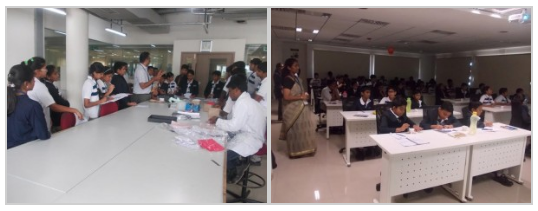
[/vc_column_text][/vc_tta_section][/vc_tta_tour][/vc_column][/vc_row]

